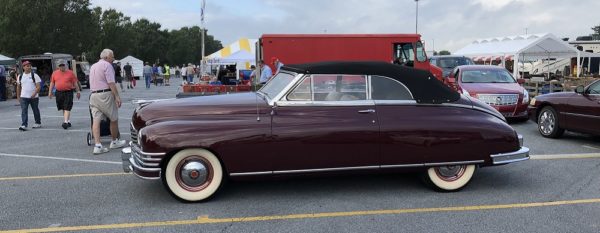
By the end of World War II, Packard was in excellent financial condition, but it started to make a number of management mistakes that would ultimately lead to its downfall.
From 1935, Packard had responded to the depression years by entering the highly competitive mid-priced eight-cylinder car market with its One-Twenty and the Six/One-Ten models. Although this was necessary before World War II, mid-priced Packards were simply not needed in the seller’s market of the immediate post-war period, and Packard’s prwar reputation as makers of the finest motor cars was severely undermined.
This 1948 Packard Super Eight Convertible was part of this continuing post-war emphasis on an affordable mid-range Eight. Packard simply could not afford a complete re-tooling for the post-war style, and was forced to add heavy pieces of sheet metal to give its cars a more modern “flow-through-fender” effect. This added 200 needless pounds to the cars.
The result was fatter and far less elegant than the 1941-1947 cars: motoring writer Tom McCahill described the 1948 Packard as fit for “a dowager in a Queen Mary hat.” It was also often known as the “pregnant elephant.”
But in these heady early post-war years Packard could sell every car it built, and delivered 92,000 for the 1948 model year and 116,000 of the very similar 1949 models.
We are still grateful that this 1948 convertible has survived, as an example of the gradual modernisation of post-war American car styling before the rapid developments of the 1950s.







Leave a Comment